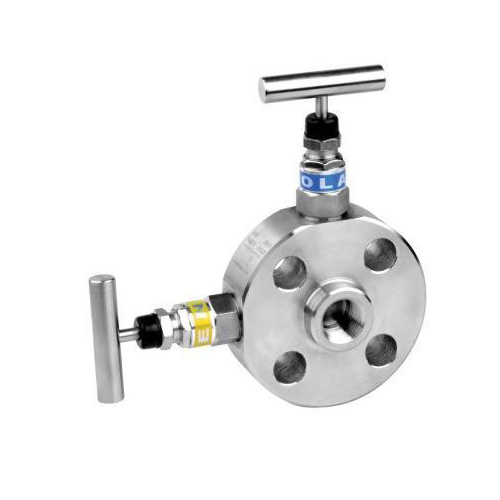Slimline Valves: Compact, Efficient, and Reliable Solutions for Modern Systems
2025-01-04
In the world of fluid control and management, the importance of using high-performance valves cannot be overstated. Whether in industrial, commercial, or residential applications, valves are crucial components that regulate the flow of liquids and gases, ensuring system efficiency and safety. Among the many types of valves available, slimline valves have emerged as a popular choice due to their compact design, efficiency, and versatility.
In this blog, we will explore what slimline valves are, how they function, their benefits, and where they are commonly used. We’ll also take a closer look at why these valves are a favored choice for modern systems that require space-saving solutions without compromising on performance.
What are Slimline Valves?
Slimline valves are compactly designed valves that offer the same functionality and reliability as traditional valves but in a smaller, more space-efficient form. Typically, slimline valves are designed to fit into confined spaces where larger valves might be impractical or impossible to install. Despite their smaller size, they are engineered to handle the same pressures, flows, and performance standards as their bulkier counterparts.
Slimline valves are commonly used in systems where space is at a premium, such as in tight mechanical rooms, residential plumbing, or small-scale industrial processes. Their design often involves more streamlined, smaller bodies, and they can be made from a variety of materials, including brass, stainless steel, or durable plastics, depending on the application.
How Do Slimline Valves Work?
The basic function of a slimline valve is no different from that of any other valve: to control the flow of liquids or gases within a pipe or system. These valves use a mechanism (such as a rotating ball, gate, or piston) to either block or allow fluid to pass through, depending on the required flow rate or pressure.
- Ball Valves: In a slimline ball valve, a spherical disc with a hole is rotated to either allow or block fluid flow. These are common in applications where a quick shut-off and reliable flow control are needed.
- Gate Valves: Slimline gate valves use a sliding gate that moves up or down to control fluid flow. These are used for regulating the flow of liquids and gases when a more gradual opening and closing process is required.
- Needle Valves: Slimline needle valves are used for fine adjustments to the flow of liquids or gases, often in systems that require precise control, such as in laboratory settings or instrumentation.
The key advantage of a slimline valve is that, despite its smaller size, it can handle the same operational pressures, flow rates, and temperature ranges as a larger valve, making it ideal for applications where space limitations are a concern.
Benefits of Slimline Valves
1. Space Efficiency
The most obvious benefit of slimline valves is their compact design. They are perfect for applications where space is tight or where a smaller valve footprint is required. Whether you’re working with cramped machinery, small pipelines, or systems with limited room for bulky equipment, slimline valves offer a great solution to maintain performance without compromising on available space.
2. Ease of Installation
Due to their smaller size, slimline valves are easier to install and maneuver in confined spaces compared to traditional valves. This makes them ideal for use in situations where installation space is restricted, or where the valve must be fitted in a pre-existing, space-limited system.
3. Cost-Effective
Slimline valves are often more cost-effective than their larger counterparts, especially for applications that do not require heavy-duty equipment. Their reduced material costs and smaller size contribute to a more affordable solution while still maintaining high performance.
4. Energy Efficiency
With their efficient design, slimline valves often require less energy to operate compared to larger, bulkier valves. This can translate into reduced operational costs, especially in systems where valves are frequently adjusted or used in automated processes.
5. Durability and Reliability
Despite their small size, slimline valves are built to last. They are manufactured using high-quality materials that ensure long-term durability and resistance to wear, corrosion, and damage from harsh operating conditions. This makes them a reliable choice for a wide range of applications.
6. Versatility
Slimline valves are incredibly versatile and can be used in many different sectors, from residential plumbing and heating systems to industrial applications in the chemical, pharmaceutical, and food processing industries. Their ability to handle a variety of fluids and gases, including high-pressure and high-temperature applications, makes them suitable for a wide array of systems.
Common Applications of Slimline Valves
1. Residential Plumbing
Slimline valves are commonly used in residential plumbing systems where space is limited, such as in water heaters, pipe junctions, or compact fixtures. Their small size allows them to fit seamlessly into plumbing systems without taking up valuable space.
2. HVAC Systems
In heating, ventilation, and air conditioning (HVAC) systems, slimline valves can be used to control the flow of air and water through pipes and ducts. Their compact design ensures they can fit into tight areas, making them ideal for use in compact HVAC units and systems.
3. Industrial Processes
Slimline valves are widely used in industrial applications, including chemical plants, oil refineries, and pharmaceutical manufacturing. Their ability to regulate the flow of chemicals, gases, or liquids with precision makes them essential components in these highly controlled environments.
4. Automotive Systems
Slimline valves are also used in automotive applications, such as in fuel lines, air systems, and hydraulic control systems. Their small size allows them to fit into engine compartments and other confined areas while still offering reliable performance.
5. Agriculture and Irrigation
In agricultural settings, slimline valves are used in irrigation systems to control water flow efficiently. Their compact design allows them to be installed in tight spaces, such as within irrigation manifolds or control stations, ensuring that water is distributed efficiently to crops or fields.
Choosing the Right Slimline Valve
When selecting a slimline valve for your application, it's important to consider several key factors to ensure you choose the right one for your needs:
- Material: Consider the material of the valve, especially if it will be exposed to corrosive substances, high temperatures, or high pressures. Materials like stainless steel or brass are commonly used for their durability and resistance to corrosion.
- Flow Requirements: Determine the flow rate needed for your system. Slimline valves come in a variety of sizes and types, each suited for different flow capacities.
- Pressure and Temperature Ratings: Ensure that the valve you select can handle the pressure and temperature ranges of your system. Many slimline valves are designed to work in high-pressure or high-temperature environments.
- Actuation Type: Consider whether you need a manually operated valve or one that can be automated for remote control. Some slimline valves are designed for easy manual operation, while others can be integrated into fully automated systems.
Conclusion
Slimline valves represent a significant innovation in valve design, offering all the functionality of traditional valves in a more compact and space-efficient form. Whether for residential, industrial, or commercial use, these valves provide an excellent solution for systems that need reliable performance without the space requirements of larger valves.
With their efficiency, versatility, and cost-effectiveness, slimline valves are an essential component for many modern applications. As technology continues to push the boundaries of system design and space optimization, these valves will remain a critical part of fluid control and management, offering dependable performance in even the most confined spaces.



